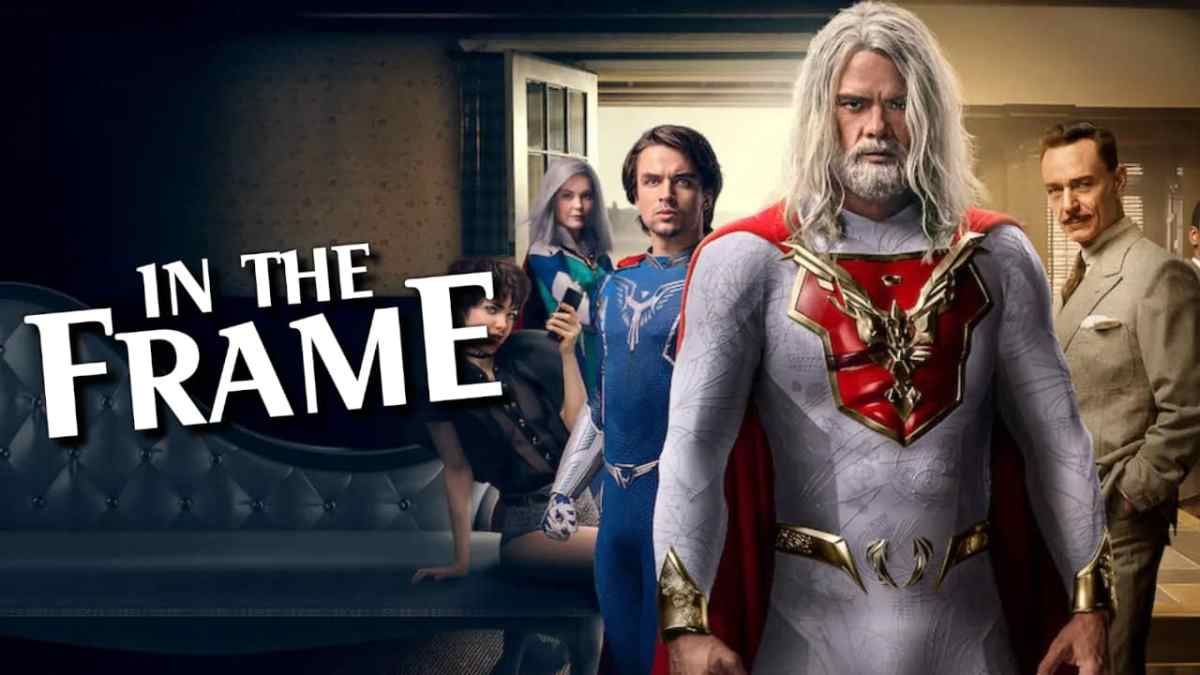This article contains spoilers for both the streaming and comic series Jupiter’s Legacy.
Jupiter’s Legacy arrives on Netflix today, in an eight-episode first “volume” that promises more to come.
There are some interesting ideas in Jupiter’s Legacy, which feels like an attempt on Netflix’s part to crack into the superhero market now that Disney has taken custody of properties like Daredevil and The Punisher. Like The Boys or Invincible on Amazon, this is an effort to create a blockbuster superhero property outside the familiar brands of Marvel and DC. It is the first project to emerge from the acquisition of Millarworld, the publisher controlled by Scottish writer Mark Millar.
There is a lot riding on Jupiter’s Legacy. According to Millar, one of the big delays in getting Jupiter’s Legacy off the ground was waiting for the right showrunner. Netflix eventually settled on Steven S. DeKnight, who oversaw most of the first season of Daredevil, following Drew Goddard’s departure. Ironically, DeKnight would leave Jupiter’s Legacy midway through the production of the first season, citing “creative differences.”
This pressure perhaps explains the biggest problems with Jupiter’s Legacy, which struggles from many of the core issues with modern streaming series. The opening eight episodes that compose this initial release of Jupiter’s Legacy suffer from the “Netflix bloat” — the sense that plotting is being extended to pad out the runtime, drawn out to reach an arbitrary runtime. It is a common problem with shows on streaming, often arising from the peculiarities of streaming as a medium.

In December 2015, critic James Poniewozik made a simple but insightful observation. Streaming is not just a new way of consuming media; it is a new type of media unto itself. This is particularly true of shows released in the model that Netflix employed for Jupiter’s Legacy, with all episodes dropped at once and audiences encouraged to consume them as quickly as possible to avoid potential spoilers. It’s a format that can feel more like an eight-hour movie than an eight episode series.
This does notable things to pacing. Binge watching has diminished the importance of the episode as a cohesive narrative unit. Given how these shows are produced and released, Netflix’s chief content officer Ted Sarandos argues that the first season “is the pilot.” As such, shows like Jupiter’s Legacy stretch the plot rhythms of a single episode across eight. What would be a meandering second act in a two-hour movie becomes three aimless episodes in the middle of a season.
This problem is particularly egregious with Jupiter’s Legacy. The series is an adaptation of Mark Millar and Frank Quitely’s six-issue comic book series. Including the spin-offs and sequels on which Millar collaborates with other artists, there are about two dozen issues in the entire Jupiter’s Legacy saga. While there’s no hard science for mapping comic book pages to screen time, that is not a lot of plot for a potentially long-running television series releasing in eight-hour chunks.
After all, Millar and Quitely established themselves in American comics with a run on The Authority that helped to codify a movement known as “decompressed comics.” These were comics that favored spectacle and mood over plotting and dialogue, and some critics would complain that these comics were light on substance. Millar has been accused of writing comics as pitches for cinematic adaptation. Millar disputes this and argues that scripting cinematically was something he “just did naturally.”

Typically, a half-dozen issues of Millar’s plotting translates to about a single feature-length adventure. His seven-issue Civil War miniseries with Steve McNiven inspired a two-and-a-half-hour movie. Kick-Ass was based on an eight issue collaboration with John Romita Jr. His six issue Wanted series with J. G. Jones spawned a feature film. By this logic, the entirety of Millar and Quitely’s work on Jupiter’s Legacy (including spin-offs and sequels) could probably fit within a single eight-hour event series.
However, that is not what Netflix wants from Jupiter’s Legacy. In broad strokes, the entire eight-episode first season of Jupiter’s Legacy covers the first two issues of the epic. The show’s season-ending cliffhanger is the reveal that the superhero Brainwave (Ben Daniels) is plotting to replace his brother the Utopian (Josh Duhamel) in the hope of taking a more active role in shaping and guiding humanity. This is the closing revelation of the second issue of Jupiter’s Legacy.
To be clear, adaptation is an artform like any other. Translating a work from one medium to another often requires fundamental changes. Indeed, it is possible to argue that the best adaptations of Millar’s comics (like Kick-Ass and arguably Logan) work precisely because they play fast and loose with the source material. However, Jupiter’s Legacy is surprisingly faithful, porting over a host of details and images from those two issues. It is not a new or different approach, just a slow one.
Jupiter’s Legacy doesn’t use this additional space to develop its characters or themes. Millar wrote Jupiter’s Legacy in response to the financial crisis of 2008, an obvious parallel to the Great Depression that spawned Superman. The television show drops in a few quotes about economic issues, but it builds its thematic pivot around the tired and abstract debate about whether it’s okay for superheroes to kill — but in a way that avoids any of the potentially uncomfortable subtext.

Instead, everything is bloated and expanded in ways that don’t serve the narrative. A five-page fight sequence from the first issue of the comic becomes an epic linchpin of a major conspiracy theory and a generational divide, instead of just a demonstration of how routine superhero-ing is in the world of Jupiter’s Legacy. This sequence is imported pretty accurately from the comic, but the plot around it is altered to generate more narrative to keep the wheels spinning for the season.
Similarly, the series peppers its first season with flashbacks to explain how the heroes at the heart of the story gained their powers. These details are seeded throughout Millar and Quitely’s comic but are less interested in establishing an internal mythology for the fictional universe than in situating the characters in a particular historical context. (Both J. Edgar Hoover and Katharine Hepburn feature as characters in the spin-off Jupiter’s Circle.) In the show, these flashbacks feel like padding.
As a result, the first “volume” of the streaming series doesn’t even get to the meat of the first six-issue miniseries, with Brainwave manipulating his nephew Brandon (Andrew Horton) into killing the Utopian, forcing Brandon’s sister Chloe (Elena Kampouris) to go on the run with her boyfriend Hutch Hutchence (Ian Quinlan) and their child. All of this has happened by the start of the fourth issue of the first comic book miniseries. It’s essentially the book’s status quo.

Eight hours in, the streaming show hasn’t hit the book’s inciting incident. The season moves enough pieces around the board to suggest that the series could evolve into something resembling the outline of the comic. The television series hasn’t chosen a distinct or unique interpretation of the source material. In fact, the show is following the established plot beats from the comic closely enough. The show is just taking its time getting from each of those beats to the next.
Jupiter’s Legacy places those plot beats so far apart that the show has to come up with something to fill the space. It fails to come up with anything compelling, instead recycling familiar superhero clichés like the emphasis on the origin story or an expanded role for the villain Blackstar (Tyler Mane). The irony of all this is that it strips out a lot of the texture that made Millar and Quitely’s Jupiter’s Legacy so interesting, looking at superheroes as a reflection of American self-image.
None of this is to suggest that Millar and Quitely’s Jupiter’s Legacy was a masterpiece of the genre, but at least it was about something. In contrast, the first volume of the streaming series is just about eight episodes long.





